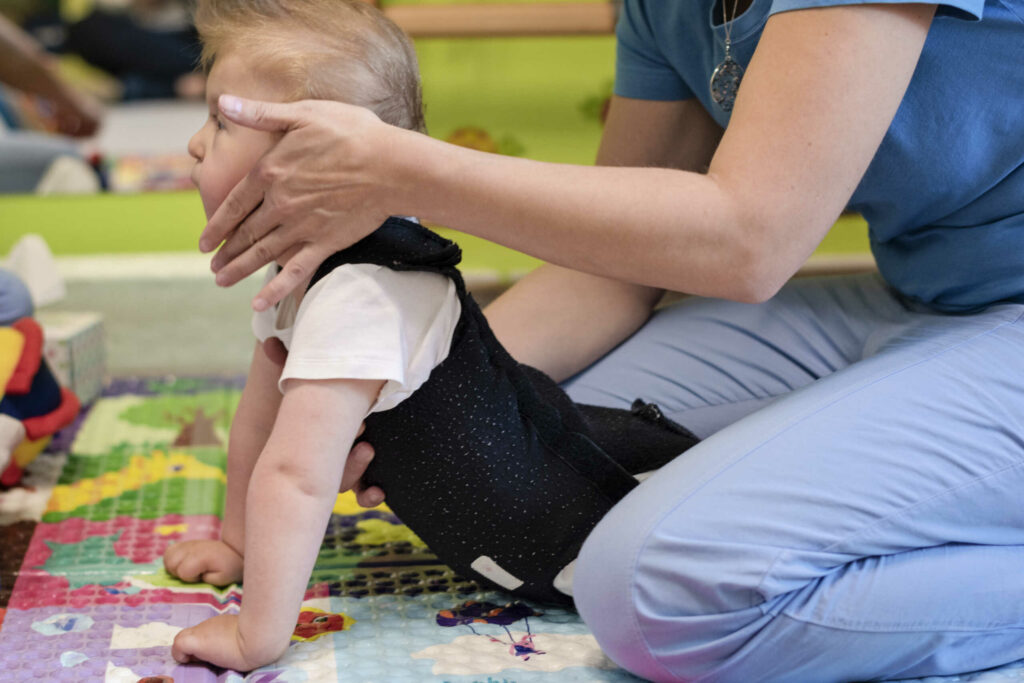The pediatric physical therapy industry has experienced consistent growth in recent years, thanks in no small part to the increasing prevalence of childhood obesity. Pediatric physical therapy is a specialized field that helps children suffering from conditions such as ADHD, cerebral palsy, and more. In this blog post, we will explore all you need to know about pediatric physical therapy, including its benefits and how it can help your child. We hope this information will help you make the right decision for your child’s care.
Contents
What is Pediatric Physical Therapy?

Physical therapy is the use of physical activity and exercise to improve function and quality of life in pediatric patients. It can help with a wide range of issues, including preventing or treating conditions such as cerebral palsy, obesity, asthma, ADHD, and more. Pediatric physical therapy can also help children learn how to participate in regular activities such as playing sports or exercising at home.
This type of therapy is also a great way to help children build stronger muscles and bones, which can help prevent conditions such as juvenile osteoporosis later in life. Sometimes there may be many different treatment plans that are necessary to help a child recover from a condition, and physical therapy is one essential part of that puzzle.
What Kinds of Disorders are Treated with Pediatric Physical Therapy?
There are a variety of disorders that pediatric physical therapists may treat with their specialized techniques. These include problems with coordination, muscle development, movement, and balance. Many pediatric physical therapy treatments also focus on improving posture and breathing.
Some of the most common pediatric physical therapy disorders treated include:
• Developmental coordination disorder (DCD) is when a child has difficulty coordinating their movements. This can make it difficult to do things like ride a bike or play basketball. DCD can often be caused by problems with motor skills, sensory processing, or both. Pediatric physical therapists often work with children to improve coordination through exercises and activities that help them develop better motor skills.
• Muscular dystrophy is a condition that affects the muscles throughout the body. It can lead to problems with movement, coordination, strength, and endurance. Pediatric physical therapists may work with children who have muscular dystrophy to help them manage the condition and improve their quality of life.
• Dyspnea is a problem with breathing that can cause lots of discomfort for kids and adults alike. Pediatric physical therapists may work with children who have dyspnea to help them learn how to breathe more easily and effectively. This can often prevent asthma from developing later in life.
• Gastroesophageal reflux disease (GERD) is a problem where stomach acid flows backward up into the esophagus (the tube that goes from the stomach to the mouth). This can cause a lot of pain, difficulty swallowing, and heartburn. Pediatric physical therapists often work with children who have GERD to help them learn how to manage their symptoms. This can often prevent serious health problems down the road.
How Does Pediatric Physical Therapy Work?

The working of pediatric physical therapy depends on the specific needs of each patient. Generally, physical therapists will assess the patient’s physical abilities and limitations, and then create a personalized treatment plan to help them reach their goals.
This treatment plan may include exercises to improve strength, balance, coordination, and range of motion. It may also involve using specialized equipment or working with other health professionals, such as occupational therapists or mental health professionals.
Physical therapists will also provide instruction and advice on how to safely perform activities at home, such as lifting objects or using the stairs. They may also recommend lifestyle changes to help the child maintain their physical health and reduce the risk of injuries.
The working of pediatric physical therapy also may involve providing emotional support and education to the patient and their family. This includes teaching them about how their condition affects them, helping them set achievable goals, and offering advice on how to help manage symptoms.
Some techniques make pediatric physical therapy a unique and effective form of treatment. Some of these include:
- Manual Therapy – This involves using hands-on techniques to manipulate joints and muscles to improve the range of motion, reduce pain, and restore movement.
- Exercise Prescription – Physical therapists may provide exercises tailored to each patient’s needs to improve strength, coordination, and balance.
- Balance Training – This involves teaching patients how to control their body’s movements in a way that helps them maintain balance and stability.
- Aqua Therapy – This type of therapy involves performing exercises in shallow water or on an underwater treadmill. It is often used for children who experience difficulty with land-based activities due to joint or muscle weakness.
- Therapeutic Activities – This type of therapy involves using recreational activities, such as trampoline bouncing or playing catch, to help improve balance and coordination.
Who Should Receive Pediatric Physical Therapy?

Physical therapy is an important treatment for pediatric patients. For many children, physical therapy can help them recover from injuries or improve their overall health. The following are some of the factors to consider when deciding who should receive pediatric physical therapy:
The severity of the condition
One of the most important factors to consider when determining who should receive pediatric physical therapy is the severity of the condition. Generally, more severe conditions require more intensive treatment, which may include physical therapy.
The specific needs of the patient
Pediatric physical therapists will also assess the specific needs of each patient when deciding if they would benefit from physical therapy. This includes evaluating the patient’s physical abilities and limitations, medical history, and any existing disabilities.
The age of the child
Age is another important factor to consider when deciding if a child should receive pediatric physical therapy. For younger children, physical therapists may focus on helping them develop motor skills or strengthen their muscles. For older children, therapists may work to improve their strength, coordination, and range of motion.
The ability to participate in therapy
It is important to evaluate the child’s willingness and ability to participate in physical therapy sessions. If a child has difficulty understanding instructions or cannot complete exercises on their own, they may need additional support or modifications during therapy.
Other medical conditions the patient may have
Sometimes, physical therapy may be recommended for children with other medical conditions, such as Down Syndrome or autism. The goal of physical therapy in this case is to help the child reach their full potential and improve symptoms associated with their condition.
Insurance coverage
Sometimes, insurance companies may not cover physical therapy for children. It is important to check with the insurance company before beginning any treatment plan to ensure that it will be covered.
Availability of therapists in the area
A physical therapist’s availability can also influence who should receive pediatric physical therapy. If there are no therapists in the area, it may be difficult to find a quality therapist that has the necessary experience and knowledge to treat pediatric patients.
How To Take Pediatric Physical Therapy?

Taking your child for pediatric physical therapy is an important step in helping your child reach his or her full potential. First, you should consult with your pediatrician to determine if physical therapy is appropriate for your child’s needs and to discuss the goals of physical therapy for your child. Your pediatrician may refer you to a qualified physical therapist who specializes in working with children so that they can provide your child with the most effective treatment plan tailored specifically to their individual needs and abilities.
The physical therapist will assess your child’s range of motion, strength, and coordination as well as any impairments caused by developmental delays or medical conditions. Based on this assessment, they will create a personalized treatment plan consisting of exercises, activities, and strategies designed to help improve mobility, strength, and coordination. The therapist will also work with your child to build their confidence in physical activities, as well as teach them how to properly engage in physical activity while being safe and taking preventative measures against injury.
Your child’s physical therapy sessions can take place at home, school, or in an outpatient setting, depending on the individualized needs of your child. During each session, your physical therapist will use a combination of hands-on techniques and activities designed to help your child progress toward their goals. Depending on your child’s age and abilities, therapists may use play-based strategies such as games or songs that are fun for a young child but also provide therapeutic benefits.
With the right approach and support from a qualified pediatric physical therapist, your child can gain the skills and confidence they need to become active, healthy, and reach their full potential. If you’re considering pediatric physical therapy for your child, contact your doctor or primary care provider for a referral today.
Conclusion
Physical therapy is a type of therapy that aims to improve physical function by restoring movement and/or relieving pain. In pediatric physical therapy, we work with children and their families to help them understand the cause of their symptoms, develop a treatment plan, and achieve goals. We believe in holistic care and strive to provide our patients with the best possible outcomes.
Physical therapy for pediatric patients can help restore and maintain physical function, increase the range of motion, and decrease pain in the body. Pediatric physical therapists use a variety of techniques to achieve these goals, including exercises designed specifically for young patients. If you are a parent or guardian interested in enrolling your child in pediatric physical therapy, be sure to read about the benefits and risks associated with this type of treatment before making a decision.
Physical Therapy help patients recover from pain. If you’re experiencing Back pain, Shoulder pain, Knee pain, Neck pain, Elbow pain, Hip pain, or Arthritis pain, a physical therapist at MantraCare can help: Book a physiotherapy session.


